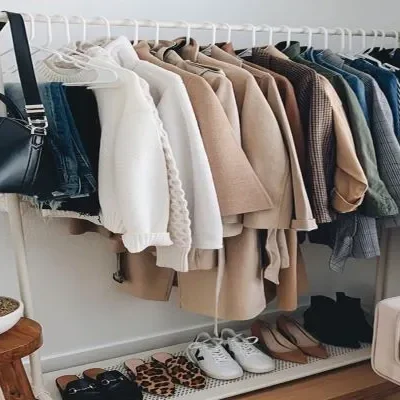When it comes to buying diamond earrings, it’s essential to ensure that you are purchasing an authentic product. Diamonds are a significant investment, and buying a fake or low-quality product can lead to financial losses and disappointment. Therefore, it’s crucial to know how to identify authentic diamond earrings from imitations, scams, and low-quality products. In this blog post, we will discuss how to make sure you are buying authentic diamond earrings and avoid scams. By following these guidelines, you can make a wise investment and enjoy the beauty and durability of genuine diamond earrings.
Understanding the 4 Cs of Diamond Quality
Diamonds are graded based on the four Cs: cut, color, clarity, and carat weight. Understanding these characteristics is crucial to determine the value and authenticity of diamond earrings.
A. Cut
The cut of a diamond refers to its shape, proportions, and symmetry. A well-cut diamond reflects light and creates a brilliant sparkle. In contrast, a poorly cut diamond appears dull and lifeless. When buying diamond earrings, look for a well-proportioned cut to ensure maximum brilliance and fire.
B. Color
Diamonds come in a range of colors from colorless to yellow or brown. The most valuable diamonds are colorless or near-colorless, while diamonds with a yellow or brown tint are less valuable. To identify the color of diamond earrings, check them under natural light or use a diamond color grading scale.
C. Clarity
Diamonds can have natural flaws or inclusions that affect their clarity. The fewer inclusions a diamond has, the more valuable it is. Look for diamond earrings with minimal visible inclusions or blemishes to ensure a high-quality product.
D. Carat Weight
The carat weight of a diamond refers to its size and weight. Larger diamonds are rarer and more valuable than smaller ones. When buying diamond earrings, consider your budget and personal preference for size.
By understanding the four Cs of diamond quality and how they affect the value and authenticity of diamond earrings, you can make an informed decision when purchasing diamond jewelry.
Also read: Streetwear Fashion: A Fusion of Style, Comfort, and Individuality
Certification and Grading
Diamond certification and grading are crucial to ensure the authenticity and quality of diamond earrings.
A. Importance of Diamond Certification and Grading
Diamond certification is an independent evaluation of a diamond’s characteristics, including the four Cs, conducted by a third-party laboratory. A diamond certificate provides an objective assessment of a diamond’s quality, ensuring that it meets industry standards. This certification protects consumers from buying fake or misrepresented diamonds.
B. Diamond Certification and Grading Organizations
Several diamond certification and grading organizations exist, but the most reputable ones include:
- Gemological Institute of America (GIA): GIA is one of the most respected diamond grading organizations in the world. It uses a comprehensive grading system to evaluate diamonds based on their cut, color, clarity, and carat weight.
- American Gem Society (AGS): AGS is another highly respected diamond grading organization. It uses a more stringent grading system than the GIA, which involves a detailed analysis of the diamond’s proportions, symmetry, and light performance.
- European Gemological Laboratory (EGL): EGL is a diamond grading organization that is known for being less stringent in its grading system than GIA or AGS. As a result, diamonds certified by EGL tend to be lower in quality and value than those certified by GIA or AGS.
When purchasing diamond earrings, it’s essential to ensure that they come with a diamond certificate from a reputable organization. This certification guarantees that the diamond earrings are authentic and of high quality.
Spotting Fake Diamond Earrings
Unfortunately, there are many scams and imitations in the diamond market. Here are some tips to help you spot fake diamond earrings and avoid being scammed.
A. Synthetic Diamonds and Diamond Simulants
Synthetic diamonds are man-made diamonds that have the same chemical composition and physical properties as natural diamonds. Diamond simulants, on the other hand, are imitations that may look like diamonds but are made from other materials such as cubic zirconia or moissanite. To spot synthetic diamonds or diamond simulants, look for clues such as overly perfect cuts, lack of imperfections or inclusions, and low prices.
B. Treatments
Some diamonds undergo treatments to improve their appearance or cover up flaws. Common treatments include laser drilling, fracture filling, and irradiation. Laser drilling is a process that removes inclusions from diamonds, while fracture filling involves injecting a substance to fill cracks in the diamond. Irradiation is a process that alters the color of diamonds. Look for signs of treatments such as surface-reaching holes or cracks, unusual colors, or suspiciously low prices.
C. Common Tricks Used by Scammers
Scammers may use a variety of tricks to deceive buyers. Some may claim that their diamonds are certified by a reputable organization when, in fact, they are not. Others may use terms like “diamond-like” or “simulated diamond” to mislead buyers into thinking they are purchasing real diamonds. Always ask for a diamond certificate from a reputable organization and do your research before making a purchase.
By being aware of these common scams and using these tips to spot fake diamond earrings, you can protect yourself from being scammed and ensure that you are buying authentic diamond earrings.
You may like: The Power of Hairstyles in Fashion: Why Your Hair Matters
There are several tests you can do to spot fake diamond earrings and avoid scams. Here are some tips to help you:
- Verify the Refractivity of the Stone: Real diamonds will refract light and create a rainbow effect, while fake stones will not.
- Fog Test: Breathe on the diamond to create a fog, and observe how quickly it clears. Real diamonds will clear quickly, while fake stones will take longer.
- Consider the Reflection: Look at the diamond under a light and observe the reflection. Real diamonds will reflect a gray color, while fake stones may reflect rainbow colors.
- Inspect the Attachment and the Setting: Authentic diamond earrings will have secure attachments and high-quality settings.
- Test whether the Stone Breaks when Heated: Diamonds are highly heat-resistant, while fake stones may shatter or crack when heated.
- Experiment with Water: Real diamonds will sink in water, while fake stones will float.
- Have it Looked at Under a Microscope: A jeweler or gemologist can examine the diamond under a microscope to identify any flaws or inconsistencies.
- Use a Highly Precise Scale: Authentic diamond earrings will have a specific weight, so using a highly precise scale can help you determine whether the diamond is real or fake.
- Obtain Proof of Completion by Requesting a Certificate: Ask for a diamond certificate from a reputable organization, such as GIA or AGS, to verify the authenticity and quality of the diamond earrings.
Where to Buy Authentic Diamond Earrings
When it comes to buying authentic diamond earrings, it’s essential to choose a reputable seller that you can trust. Here are some recommendations for where to buy authentic diamond earrings:
A. Reputable Jewelry Stores
Reputable jewelry stores such as Tiffany & Co., Harry Winston, and Cartier are known for their high-quality diamonds and excellent customer service. When purchasing diamond earrings from a jewelry store, look for a store that has a good reputation and has been in business for many years. Also, ask for a diamond certificate from a reputable organization.
B. Online Retailers
There are many online retailers that specialize in diamond jewelry, such as Blue Nile, James Allen, and Brilliant Earth. When purchasing diamond earrings online, be sure to read customer reviews to ensure that the retailer has a good reputation. Additionally, make sure that the retailer offers a return policy in case you need to return the earrings. Always ask for a diamond certificate from a reputable organization and verify the authenticity of the diamond earrings before making a purchase.
C. Auction Houses
Auction houses such as Christie’s and Sotheby’s often sell high-quality diamond earrings at competitive prices. When purchasing diamond earrings from an auction house, be sure to do your research beforehand and set a budget for yourself. Additionally, be aware that there may be additional fees such as buyer’s premiums and shipping fees.
By purchasing diamond earrings from reputable sellers and verifying the authenticity of the earrings before buying, you can ensure that you are buying authentic diamond earrings that are of high quality.
FAQ
A: Diamond simulants, such as cubic zirconia or moissanite, can be visually similar to real diamonds, but they are not the same. They are often cheaper and lack the brilliance, durability, and value of real diamonds. If you want to invest in authentic diamond earrings, it’s important to verify that the diamonds are real.
A: Diamond certificates should come from reputable organizations such as GIA, AGS, or EGL. You can verify the authenticity of a diamond certificate by checking the organization’s website or contacting them directly. Be wary of certificates from unknown or unaccredited organizations.
A: Fluorescence is a diamond’s tendency to emit a soft glow under ultraviolet light. Some diamonds with strong fluorescence can appear hazy or milky in natural light, which can affect their value. However, fluorescence is not always a bad thing and can add to a diamond’s unique beauty. It’s important to consider fluorescence in the context of the other 4 Cs when evaluating a diamond’s quality.
A: There are many reputable online retailers that specialize in diamond jewelry, but there are also many scams and fake websites. Be sure to read customer reviews, verify the authenticity of the diamond earrings, and check the return policy before making a purchase. It’s also a good idea to purchase from online retailers that offer secure payment methods and have a good reputation.
Conclusion
In conclusion, buying authentic diamond earrings is essential to avoid scams and ensure that you are making a good investment. Understanding the 4 Cs of diamond quality and the importance of certification and grading can help you make an informed purchase. Additionally, being able to spot fake diamond earrings and knowing where to buy authentic diamond earrings can help you avoid being scammed.
Remember to always ask for a diamond certificate from a reputable organization and verify the authenticity of the diamond earrings before making a purchase. Whether you choose to purchase diamond earrings from a reputable jewelry store, online retailer, or auction house, be sure to read customer reviews, check the return policy, and do your research beforehand.
By following these tips, you can ensure that you are buying authentic diamond earrings that are of high quality and will be a valuable investment for years to come.





